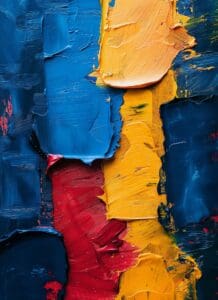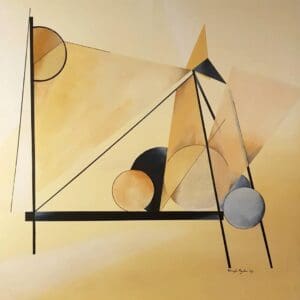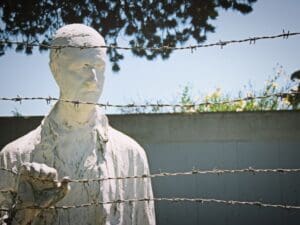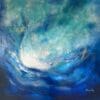The word ‘Medieval’ brings to mind the popular tale of King Arthur & his knights, around the famous Round Table. However, this is just a minor fraction of the otherwise expansive era of Medieval Art, beholding some of the finest art works. The Early Medieval Art Period stretched for over 1000 years, spanning geographically over Europe, Middle East, and North America. The prolific Medieval Period witnessed the dawn of several key art phases, Early Christian, Migration Period, Celtic, Byzantine, Islamic, Pre-Romanesque, Romanesque, and Gothic, with each period further diversifying into several other time zones. In short, Medieval Art is a blend of several art movements, such as Classical, Early Christian, and Pagan Arts.
One of the most prominent periods in the history of Early Medieval Art is the Migration Period. The art works produced during this era, drew inspirations from Germans and Eastern Europeans, who were on move from about third century to ninth century (300-900). The history of Migration Period dates back to the third century, when the Roman Empire fell to Germans. Actually, the number of Germans in the army increased and by the close of sixth century, small & less politically organized, but dynamic German Kingdoms, replaced the entire Western Roman Empire.
Though cosmopolitan, these German groups shared a common cultural background, ‘Mobile Art,’ emphasizing on the practical applicability and the functioning of weapons, tools, and jewelry. In effect, these works encompassed portable personal embellishments that could be buried in the grave, as an act of restoration to dead spirits, safeguarding the ones alive. The major styles that dominated the Early Medieval Art in the Migration Period include ‘Polychrome Style,’ ‘Animal Style,’ and ‘Hiberno-Saxon style.’
The ‘Polychrome Style,’ originated from the Goths, in Black Sea, comprised the works of art as gold figurines & objects, ornamented with precious stones. The most prominent example of this style is found in the fourth century “Pietrossa Treasure” (fourth century) in Romania, featuring a great gold eagle brooch. Some other examples include a “Polychrome Sword” (fifth century), in the Tomb of Frankish King Childeric I, “Visigothic Polychrome Votive Crown” (c. 670) of the then King of Toledo, Recceswinth, and “Alemannic Belt Mountings” (seventh century), at Weingarten.
Originally, from Scandinavia, North Germany, and Anglo-Saxon England, ‘Animal Style’ of the Migration Period, was practiced in the fifth century. The artworks of this philosophy comprised of the zoomorphic decorations with the application of ‘chip carving’ on copper and silver. In fact, chip carving was introduced with this style. The artworks here depicted animals as twined, surreal, exaggerated, and/or fragmented body parts. These images filled nearly every space available on the art medium, thereby energizing the feel of work. “Norwegian Vendel Sword Hilt,” Norway, and “Fibula” (400-50 AD), Osland Island, and “Gold Purse Lid” (625), Sutton Hoo, England, are some good examples of the ‘Animal Style.’ By the end of the seventh century, the style carried significant religious Christian influence, transitioning the artistic essence form Germanic to Mediterranean.
Another Early Medieval Art style belonging to the Migration Period, was ‘Hiberno-Saxon Art’ or the ‘Insular Art,’ reflected the fusion of ‘Animal Style’ (German) and ‘Celtic Art’ (Irish), especially on “Illuminated Manuscripts.” The style started at the end of the seventh century and continued up to ninth century. Some important Hiberno-Saxon craft works include “Texts with Artworks” and “Carpet Pages,” referring to the ornamented pages without text. The “Book of Durrow” (late seventh century) and “Lindisfarne Gospels” (late seventh century or early eighth century), Northumbria, are the work examples here.
The “Tara Brooch” and “Ardah Chalice” are the magnificence of the Migration Period metalworking, which started in the seventh century. This Early Medieval Period technique blended the art of metalworking, ornamentation, filigree, and chip carving & rock crystal, to produce an artwork.
“High Cross,” built mainly in Ireland, Britain, and Scandinavia, relate the story ornate stone sculpturing of the Migration Period, such as “Muiredach’s High Cross,” in Ireland. The chapter of Migration Period in the book of Early Medieval Art is definitely one of the most prosperous periods of all.





